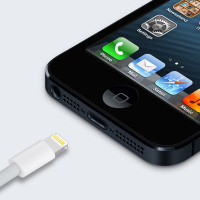Apple was among the mobile phone manufacturer companies that signed the “Radio and telecommunications terminal equipment (R&TTE) One charger for all memorandum” to reduce electronic waste from mobile phone accessories, particularly chargers, by standardizing them to USB adapters.

However, Apple has flouted this agreement with the release of their new iPhone 5 which comes with a completely redesigned charging and cable connectivity port – the lightning connector – but it is not only a USB but also completely different from those of former iPhones. This means that iPhone 5 will need to have its specific charger and or adapter if using an older charger from previous iPhones versions.
iPhone went back on the agreement they signed to include a micro USB port or connector on the iPhone breaking their promise to EC. The agreement categorically urges signatory companies to ensure that every phone they sell within the EU can be charged using a common charger. The most common platforms that the phones are equipped with are micro USB configured with ETSI EN 301489-34 and 2009 CENELEC EN 62684 standards. Considering that this is an agreement Apple signed over 3 years ago, what excuse does Apple has for not complying?
Apple customers in the EU will need to buy a power Micro USB adapter from Apple stores to be able to charge their phones with the micro USB chargers. The memorandum signed reads in part “…In order that compatibility of as many Mobile Phones as possible with a Common EPS may be enabled, if a manufacturer makes available an Adaptor from the Micro USB connector of a Common EPS to a specific non-Micro-USB socket in the Mobile Phone, it shall constitute compliance to this article…”
Does Apple Have Any Plans?
First off, the micro USB adapter does not come free. EU iPhone users will have to part with an additional $45 to get the adapter which is a lot of money for just an adapter. Apple has also incorporated a unique identifying chip in the adapters to prevent third parties from manufacturing cheaper alternatives. This is not good news for iPhone users, because it means they have to get the adapters exclusively from Apple otherwise their smartphones will not charge.
iPhone 5 adapters actually create more waste than just shifting to micro USB standard chargers because now, there are adapters that have to be made just to be able to charge iPhone 5 with older iPhone chargers. Users who choose to buy new iPhone chargers will still have to throw away their old iPhone chargers – causing even more wastage.
Why Didn’t Apple Just Make a Micro USB Charger?
The answer lies in Apple’s business model and marketing strategy. In disallowing the use of third party adapters to charge iPhones, Apple clearly does want its customers to get all accessories from them without giving any options to their customers.
The micro USB adapters have very small pins, but pins 1 and 5 can be used for charging and can carry 5 volts at 1.8 amps – a total of 9 watts. However, the iPad needs 10 watts for fast charging and this charger probably needs to work with the future generations of iPad. Apple’s commitment to environmental issues and consideration for its customer needs is clearly not on top of its agenda.
Most phone manufacturers have already made the switch and enabled charging using a standardized USB charger but Apple does not show indications of complying with the EU Radio and telecommunications terminal equipment (R&TTE). It is up to the individual user to make them change.
